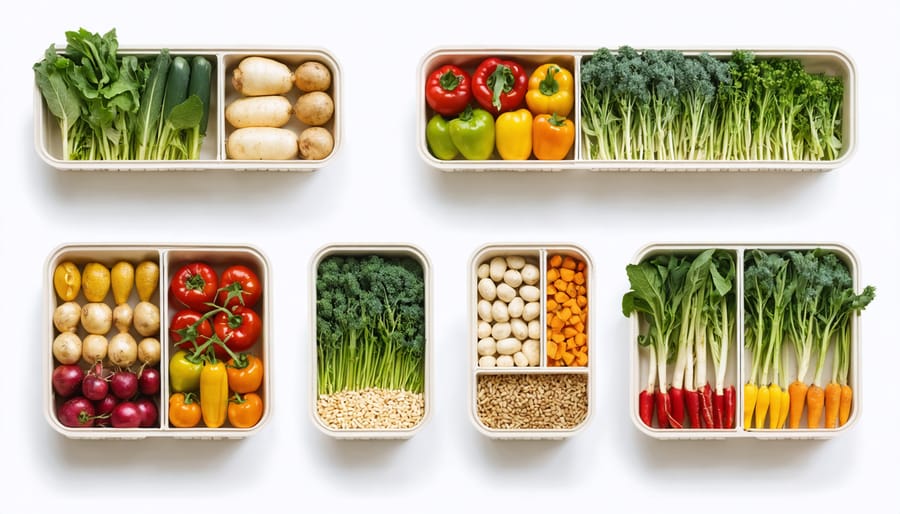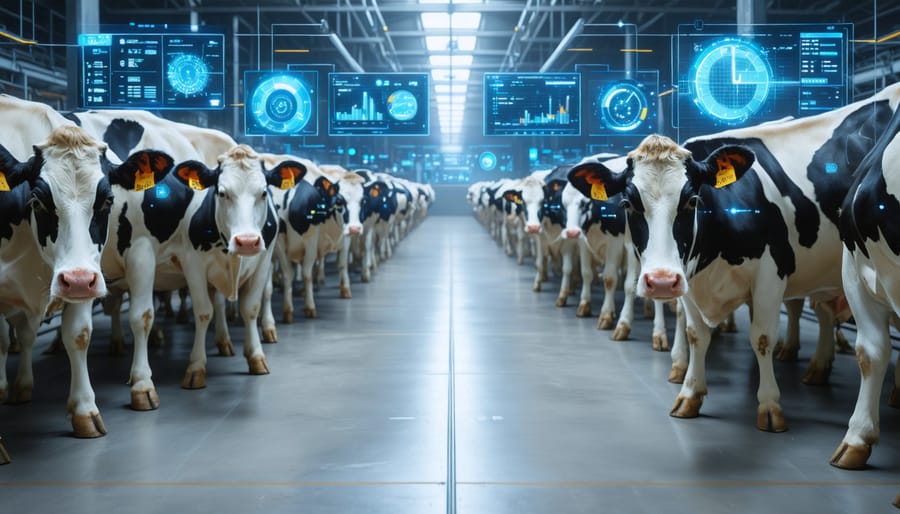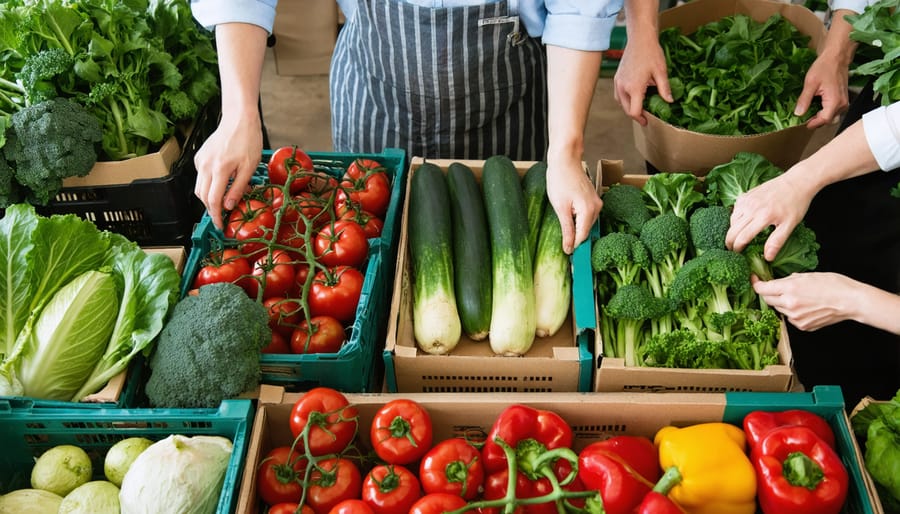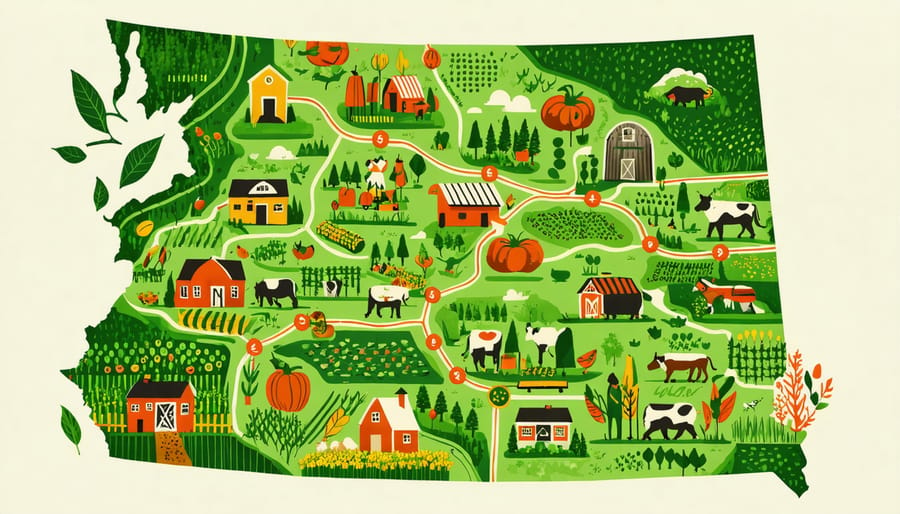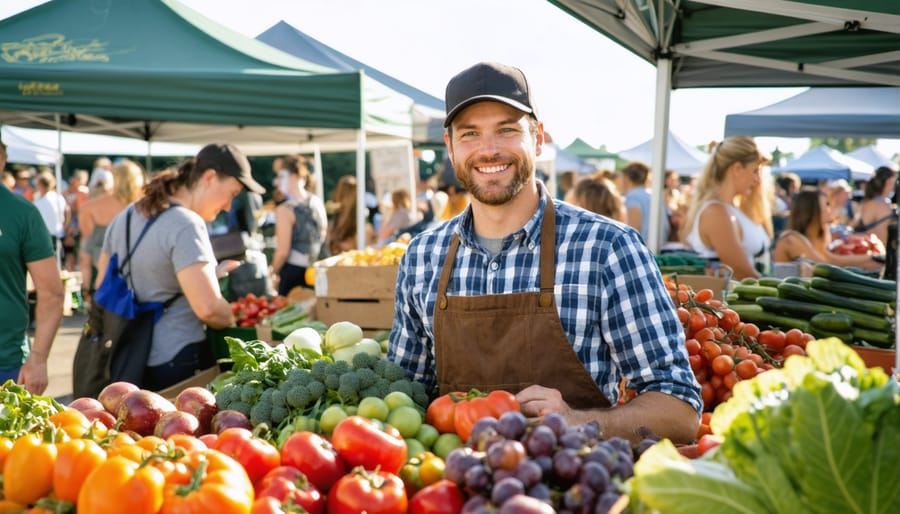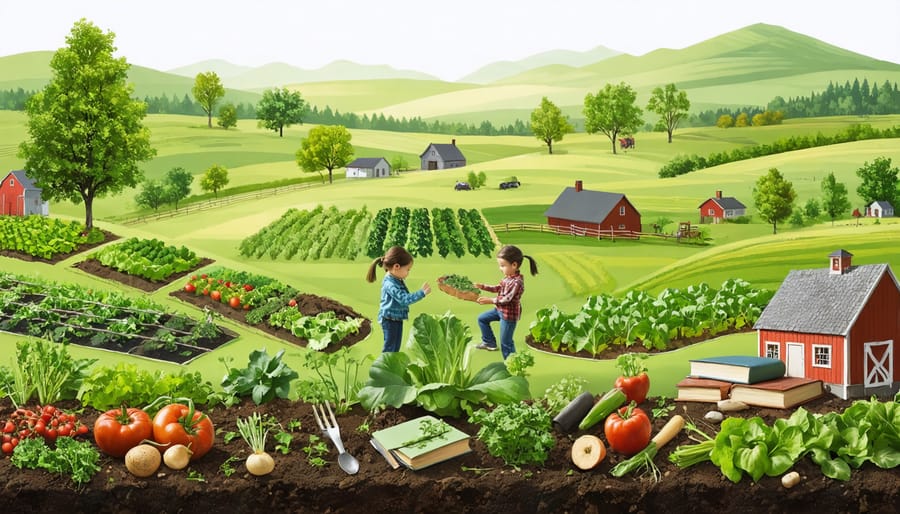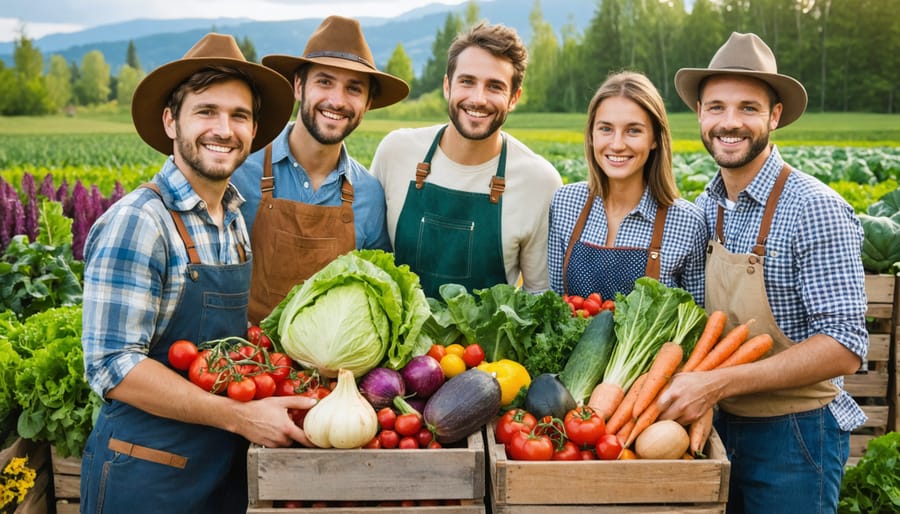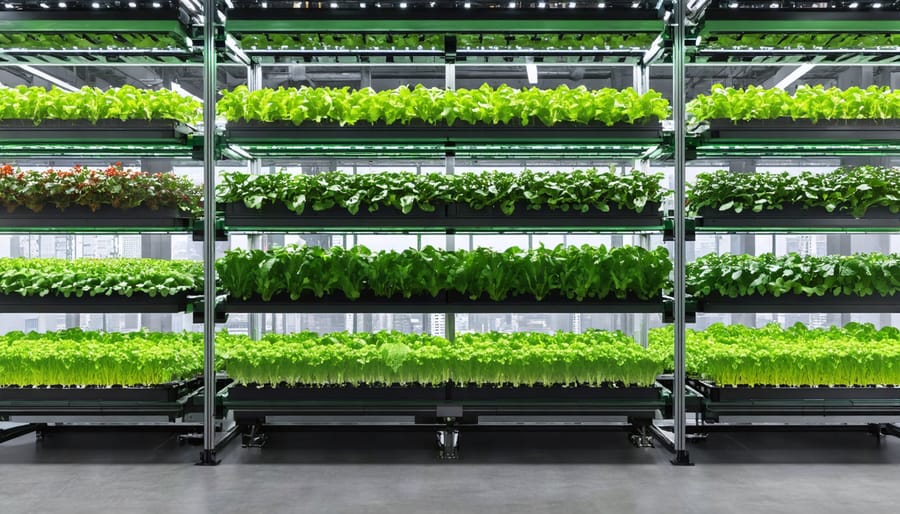Revolutionizing Canadian agriculture starts with smart, sustainable farm supply innovations that boost productivity while reducing environmental impact. From Alberta’s grain belt to British Columbia’s orchards, forward-thinking farmers are embracing cutting-edge solutions to meet modern agricultural challenges.
Today’s innovative farm supplies extend far beyond traditional equipment. Smart sensors monitor soil conditions in real-time, biodegradable packaging materials cut plastic waste by 40%, and automated inventory management systems reduce storage costs by up to 30%. These advancements help Canadian farmers maintain their position as global leaders in agricultural efficiency and sustainability.
The shift toward innovative supplies isn’t just about new technology – it’s about rethinking how we approach farming fundamentals. Local success stories, like the Medicine Hat cooperative that reduced water usage by 25% through smart irrigation supplies, demonstrate the practical impact of these innovations. As climate patterns shift and market demands evolve, these tools and technologies offer Canadian farmers the resilience and adaptability needed to thrive in an increasingly challenging agricultural landscape.
Sustainable Packaging Solutions Transforming Alberta’s Farms
Biodegradable Storage Solutions
Modern farming demands storage solutions that not only protect crops but also respect our environment. Alberta farmers are increasingly turning to biodegradable storage options that decompose naturally while maintaining product quality. These eco-friendly containers, often made from agricultural by-products like corn starch and wheat fiber, are proving particularly effective for root vegetables and grains.
For root crops like potatoes and carrots, breathable biodegradable crates allow proper airflow while maintaining optimal humidity levels. These containers typically last 12-18 months before beginning to break down, aligning perfectly with seasonal storage needs. Local farmer Sarah McKenzie from Red Deer reports a 15% reduction in storage-related losses since switching to these solutions.
Grain storage has been revolutionized by large-format biodegradable bags that can hold up to 200 tonnes of product. These bags, made from enhanced paper-based materials, offer excellent moisture protection while naturally decomposing within two years. They’re particularly suitable for temporary storage during peak harvest periods.
For delicate produce like berries and tender vegetables, smaller biodegradable containers with antimicrobial properties help extend shelf life while reducing plastic waste. These containers cost about 20-30% more than traditional options but offset expenses through reduced spoilage and environmental compliance credits.
Many Alberta farmers are finding these solutions particularly valuable for organic certification requirements, as they eliminate the risk of chemical leaching associated with traditional plastic storage. The initial investment in biodegradable storage often pays for itself through improved product quality and market access.
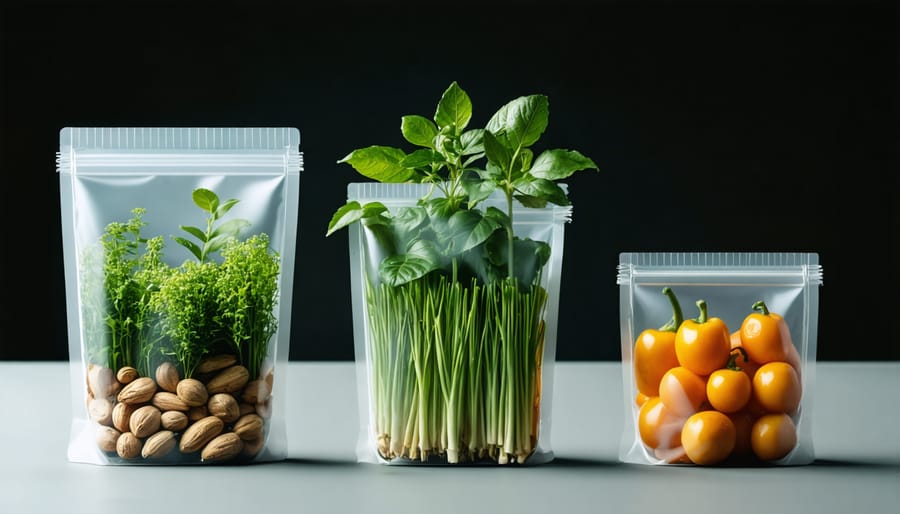
Cold Chain Innovation
Recent innovations in cold chain technology are revolutionizing how Alberta farmers maintain product freshness throughout the supply chain. Advanced temperature monitoring systems, specifically designed for our extreme climate conditions, now offer real-time tracking and automated alerts, ensuring produce remains at optimal temperatures from field to market.
Leading the way are smart storage containers equipped with solar-powered cooling systems and energy-efficient insulation, providing year-round storage solutions that can withstand both summer heat waves and winter freezes. These units feature adjustable humidity controls and ethylene management systems, extending produce shelf life by up to 40%.
Local success stories include the Red Deer Valley Co-op, which implemented modular cold storage units that reduced energy consumption by 30% while increasing storage capacity. These units use phase-change materials that maintain consistent temperatures without constant power input, making them ideal for remote locations.
Transportation solutions have also evolved, with new hybrid refrigeration systems that combine traditional mechanical cooling with thermal energy storage. These systems maintain temperature stability during long-haul journeys across Alberta’s diverse terrain, while reducing fuel consumption and environmental impact.
For smaller operations, portable cold rooms with smart monitoring capabilities offer flexible storage options that can be scaled according to seasonal needs. These units connect to mobile apps, allowing farmers to monitor conditions remotely and adjust settings from anywhere on the farm.
Smart Distribution Systems That Work in Rural Alberta
Route Optimization Technology
In today’s fast-paced agricultural landscape, route optimization technology has become a game-changer for Canadian farmers looking to streamline their distribution processes. Modern GPS and AI-powered planning tools are helping Alberta farmers reduce fuel costs, minimize delivery times, and ensure products reach their destinations in optimal condition.
Leading the way is precision mapping technology, which considers various factors such as road conditions, weather patterns, and delivery time windows to create the most efficient routes. For example, the Thompson family farm in Red Deer reported a 30% reduction in fuel consumption after implementing AI-driven route planning for their produce deliveries to local markets.
These smart systems can adapt in real-time to changing conditions, such as unexpected road closures or weather events, which is particularly valuable during Alberta’s challenging winter months. The technology also helps farmers coordinate multiple vehicles and drivers, ensuring seamless delivery schedules while maintaining product freshness.
“Since implementing route optimization software, we’ve cut our delivery times by 40% and significantly reduced our carbon footprint,” shares Sarah McKenzie, a third-generation farmer from Lethbridge. The system she uses combines weather data, traffic patterns, and historical delivery information to suggest the most efficient routes.
For smaller operations, many affordable solutions now exist, including smartphone-based apps that offer basic route planning features. These tools can help farmers optimize local deliveries while requiring minimal technical expertise. Additionally, many systems integrate with existing farm management software, creating a comprehensive solution for tracking products from field to market.
When selecting a route optimization system, consider factors such as ease of use, integration capabilities, and scalability to ensure the technology grows with your operation.
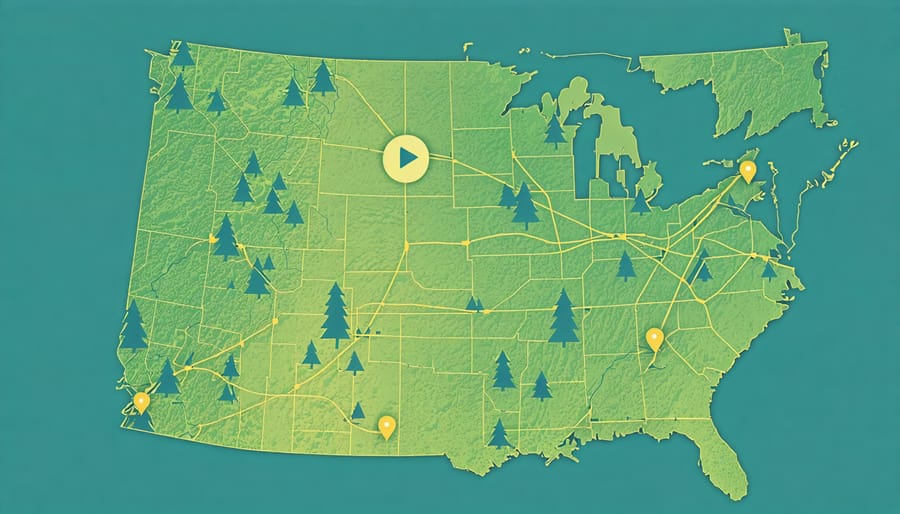
Local Hub Networks
The emergence of local hub networks is revolutionizing how Alberta farmers access and distribute innovative farm supplies. These community-based distribution centres serve as crucial connection points, bringing together suppliers, producers, and consumers in a way that strengthens local food networks while reducing costs and environmental impact.
In the Red Deer region, for example, the Central Alberta Agricultural Hub has created a shared resource centre where farmers can access everything from specialized packaging materials to cold storage facilities. This collaborative approach has reduced individual storage costs by up to 40% for participating farms.
These hubs are particularly beneficial for small and medium-sized operations participating in community-supported agriculture programs. By pooling resources and sharing delivery routes, farmers can optimize their distribution channels and access premium packaging materials at bulk prices.
The Lethbridge Agricultural Innovation Centre demonstrates how these hubs can foster sustainability. Their packaging recycling program has helped local farmers reduce waste by 30%, while their shared electric delivery fleet has cut transportation costs significantly. Moreover, these hubs serve as knowledge-sharing centres where farmers can learn about the latest sustainable packaging solutions and distribution technologies.
For many Alberta farmers, these networks have become essential infrastructure, providing access to innovative supplies that would be otherwise out of reach for individual operations. The success of these hubs shows how community-based solutions can address modern farming challenges while building stronger, more resilient agricultural communities.
Real Results: Alberta Success Stories

Small-Scale Implementation
The Janssen family farm in Lacombe County demonstrates how small-scale operations can successfully transition to sustainable packaging solutions. Like many direct sales success stories, their journey began with a simple goal: reducing plastic waste while maintaining product freshness.
Sarah Janssen, who manages their 40-hectare mixed vegetable operation, implemented a returnable container program for their CSA boxes and farmers’ market sales. The family invested in 200 sturdy, washable containers made from recycled materials, offering customers a $5 deposit return incentive. Within six months, they achieved an 85% container return rate and reduced their packaging costs by 40%.
The farm’s innovative approach includes using biodegradable vegetable wraps made from local beeswax and cotton, along with compostable twist ties for bunched greens. Their delivery vehicles now carry modular, stackable crates that maximize space efficiency while protecting produce during transport.
The Janssens report that their sustainable packaging initiatives have not only reduced waste but also strengthened customer loyalty. Regular clients frequently mention the eco-friendly packaging as a key reason for their continued support, and the farm has seen a 25% increase in CSA membership since implementing these changes.
Large-Scale Success
The Southern Alberta Agricultural Cooperative (SAAC) revolutionized farm supply distribution through their innovative “Hub and Spoke” system, launched in 2019. This case study demonstrates how modern logistics can transform traditional farming communities.
SAAC’s system connects 47 family farms across southern Alberta through a centralized warehouse in Lethbridge. The cooperative implemented a digital inventory management system that tracks supplies in real-time, allowing members to order materials through a mobile app. This streamlined approach reduced delivery times from an average of five days to just 36 hours.
The cooperative’s success lies in its unique pooling system. Members share transportation costs and bulk-purchase discounts, resulting in a 30% reduction in supply expenses. The system particularly benefits remote farms, with specialized climate-controlled vehicles ensuring temperature-sensitive materials arrive in optimal condition.
Environmental impact was also considered, with route optimization reducing fuel consumption by 25%. The cooperative introduced reusable packaging solutions, eliminating approximately 15,000 kg of single-use plastics annually.
Perhaps most importantly, the system strengthened community bonds. Weekly supply runs became opportunities for knowledge sharing and collaboration. As Marie Thompson, a third-generation farmer from Cardston, notes, “The new system didn’t just improve our bottom line; it created a stronger farming community. We’re all in this together.”
The SAAC model has since been adopted by three other regional cooperatives, proving that innovative distribution systems can work at scale while maintaining local connections.
Getting Started: Practical Steps for Your Farm
Assessment Tools
To effectively evaluate your current farm supply systems and identify areas for improvement, start with a comprehensive assessment checklist. Begin by tracking your supply usage patterns over several seasons, noting peak demand periods and potential bottlenecks. Document your current storage capacity, handling equipment, and distribution methods using detailed inventory sheets.
Consider implementing a scoring system from 1-5 for key metrics like storage efficiency, delivery times, and product quality maintenance. This helps quantify areas that need attention and provides a baseline for measuring improvements. Many Alberta farmers have found success using digital tracking tools, such as farm management apps, to streamline this process.
Create a waste audit log to monitor supply losses, damaged goods, and expired materials. This data often reveals surprising patterns and opportunities for cost savings. Survey your farm team regularly about supply-related challenges they encounter – their hands-on experience is invaluable for identifying practical solutions.
Benchmark your practices against similar operations in your region. The Alberta Farm Fresh Producers Association offers excellent resources for comparison metrics. Consider organizing informal meet-ups with neighbouring farms to share experiences and best practices.
Remember to reassess your systems seasonally, as needs change throughout the year. Keep detailed records of your findings and maintain a running list of potential improvements, prioritized by impact and feasibility. This systematic approach ensures that your investment in innovative farm supplies delivers maximum value for your operation.
Implementation Timeline
Implementing innovative farm supplies requires a structured approach to ensure smooth transition and minimal disruption to your operations. Here’s a recommended timeline for phasing in new solutions:
Month 1-2: Assessment and Planning
– Conduct a thorough inventory audit
– Identify priority areas for innovation
– Research available solutions
– Set realistic budget parameters
– Consult with local agricultural extension officers
Month 3-4: Initial Implementation
– Start with a pilot program in one area of operations
– Test new equipment or systems on a small scale
– Train key staff members
– Document early results and challenges
– Make necessary adjustments
Month 5-6: Expansion Phase
– Roll out successful solutions to other farm areas
– Establish monitoring systems
– Develop standard operating procedures
– Build relationships with suppliers
– Create maintenance schedules
Month 7-9: Full Integration
– Complete implementation across all relevant areas
– Conduct staff training programs
– Establish performance metrics
– Set up regular evaluation meetings
– Fine-tune processes based on feedback
Month 10-12: Review and Optimization
– Analyze implementation success
– Calculate ROI and efficiency gains
– Share results with stakeholders
– Plan for future innovations
– Document best practices
Remember to maintain flexibility in your timeline and adjust based on seasonal demands and unexpected challenges. Many Alberta farmers find success by implementing changes during their slower seasons, typically during winter months, to minimize disruption to critical farming operations.
The future of Canadian farming lies in embracing innovative solutions that enhance efficiency, sustainability, and profitability. By incorporating modern farm supplies and technologies, Alberta’s agricultural community can stay competitive while maintaining our commitment to environmental stewardship. Whether you’re considering automated feeding systems, precision agriculture tools, or eco-friendly packaging solutions, the key is to start small and scale up based on your farm’s unique needs.
Remember that local agricultural extension offices and farming cooperatives are excellent resources for guidance and support as you explore these innovations. Take advantage of available workshops, demonstrations, and networking opportunities to learn from early adopters in our region. By investing in innovative farm supplies today, you’re not just upgrading your operation – you’re investing in the future of Canadian agriculture. Reach out to suppliers, connect with fellow farmers, and take that first step toward modernizing your farm operations.

